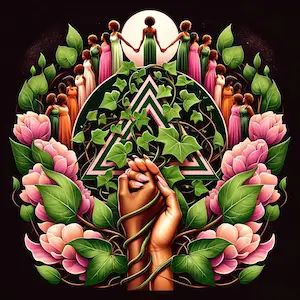Buddhist chants for the dead vary across different traditions, each reflecting the unique cultural and doctrinal nuances of its origin. From the sonorous and meditative Pali chants in Theravada Buddhism to the deeply symbolic and guiding Tibetan chants, and the devotional chants in Japanese Buddhism, these practices offer insights into how different Buddhist cultures understand and honor the transition from life to death.
This exploration is not just a journey through the various chants but also an examination of their purpose and impact. The chants are more than sounds and words; they are a source of comfort for those grieving, a method of transferring merit to the deceased, and a way to reflect on the profound teachings of Buddhism. For many, these chants are a therapeutic tool, providing solace and a sense of peace in times of loss.

Table of Contents
The Role of Chants in Buddhist Funeral Rites
In the intricate tapestry of Buddhist funeral rites, chants play a pivotal role, transcending mere verbal expressions to become conduits of spiritual meaning and solace. These chants, often steeped in ancient tradition, serve multiple purposes: they are a source of comfort for the living, a guide for the departed, and a profound expression of the Buddhist teachings on impermanence and the nature of existence.
Comforting the Living For those left behind, the loss of a loved one can be a profound source of suffering, a cornerstone concern in Buddhist teachings. Chants during funeral rites serve as a balm for this grief. Through the rhythmic and melodic recitation of sacred texts, mourners find a shared space of solace and reflection. The chants often contain teachings of Buddha, reminding the bereaved of the impermanent nature of life, thereby providing a broader perspective on death. This collective chanting can create a sense of unity and support among the grieving, helping them to process their loss within the framework of their faith.
Guiding the Deceased In many Buddhist traditions, it is believed that the consciousness of the deceased undergoes a journey after death. Chants are thought to guide this consciousness towards a favorable rebirth or enlightenment. In Tibetan Buddhism, for instance, the ‘Bardo Thodol’, commonly known in the West as ‘The Tibetan Book of the Dead’, is recited to guide the deceased through the stages (bardos) they encounter after death. These chants serve as a navigational tool, offering advice, comfort, and wisdom to the departed soul, aiding in its transition from one state of being to another.
Expression of Buddhist Teachings Buddhist funeral chants often encapsulate key teachings of the Buddha, such as the Four Noble Truths and the concept of Anicca (impermanence). By chanting these teachings, Buddhists reaffirm their understanding and acceptance of life’s transient nature. The chants serve as a reminder that death is a natural part of life’s cycle, encouraging a deeper acceptance and understanding of this inevitability.
Cultural and Sectarian Variations The specific chants used and the manner of their recitation can vary significantly across different Buddhist cultures and sects. For instance, Theravada Buddhists may focus on Pali sutras, while Mahayana traditions, such as those in Japan, may use chants in local languages, adapted to fit their doctrinal nuances and cultural contexts.
In conclusion, Buddhist chants in funeral rites are much more than ritualistic observances. They represent a profound interplay of faith, culture, and human emotion, offering comfort to the bereaved and guidance to the departed. These chants, resonating with centuries-old wisdom, continue to be a significant aspect of Buddhist funeral practices, providing a bridge between the temporal world and the spiritual journey beyond.
Types of Buddhist Chants for the Dead
Buddhist chants for the dead, rich in variety and steeped in tradition, differ significantly across various sects and regions. Each type of chant embodies unique characteristics, reflecting the diverse interpretations and practices within Buddhism. This section explores the major types of Buddhist chants used for the deceased, primarily focusing on Pali, Tibetan, and Japanese chants.
Pali Chants In Theravada Buddhism, predominantly practiced in countries like Sri Lanka, Thailand, and Myanmar, the chants are mostly in Pali, the language of the earliest Buddhist scriptures. These chants, known for their simplicity and profound meaning, often include recitations from the Sutta Pitaka, one of the principal Buddhist scriptures. A common chant is the ‘Anicca Vata Sankhara’ (Impermanent indeed are all formations), which reflects on the transient nature of life, a core concept in Buddhist teachings. The chanting of these Pali sutras during funeral rites serves to remind the attendees of the impermanence of life and to impart merit to the deceased.
Tibetan Chants In the Vajrayana tradition of Tibetan Buddhism, the chants are an integral part of the elaborate funeral rituals. The most notable among these is the recitation from the ‘Bardo Thodol’, known in the West as ‘The Tibetan Book of the Dead’. This text provides detailed guidance for the deceased as they traverse through the various stages (bardos) after death. The chants are believed to help the deceased in their journey towards liberation or a favorable rebirth. The sonorous and rhythmic nature of Tibetan chants, often accompanied by traditional instruments, creates a deeply immersive experience for both the participants and the deceased.
Japanese Chants Japanese Buddhism, with its diverse sects like Shingon, Pure Land (Jodo), and Zen, incorporates a range of chanting styles. In the Pure Land sect, the Nembutsu chant, “Namu Amida Butsu” (I take refuge in Amida Buddha), is commonly recited. This chant is an expression of faith in Amida Buddha and is believed to ensure rebirth in the Pure Land, a realm free from suffering. The Shingon sect, esoteric in nature, uses mantras and dharanis (longer chants) that are believed to have spiritual power. These chants are not just for the benefit of the deceased but also aid in the spiritual development of the chanters.
Adaptation and Fusion While these are the primary forms, Buddhist chants for the dead have adapted and evolved over time, blending traditional elements with local customs and languages. This fusion has resulted in a rich diversity of chanting practices, each resonating with the cultural and spiritual nuances of its region.
In summary, the types of Buddhist chants for the dead vary greatly across different traditions and cultures. Whether it is the reflective and direct Pali chants of Theravada Buddhism, the intricate and guiding Tibetan chants, or the devotional and diverse Japanese chants, each carries its unique essence and purpose. Together, they represent the profound role of chanting in Buddhist funeral rites, offering solace, guidance, and a spiritual connection to the deceased.
Understanding Pali Chants
Pali chants, originating from the earliest stratum of Buddhist teachings, play a significant role in the Theravada Buddhist tradition. This section delves into the essence, structure, and significance of Pali chants, particularly those recited for the deceased, offering insights into their enduring spiritual impact.
Historical and Linguistic Background Pali, an ancient language closely associated with the language spoken by the Buddha, serves as the liturgical language of Theravada Buddhism. The Pali chants are derived from the Pali Canon, the most complete collection of the Buddha’s teachings. These chants have been preserved and transmitted through oral tradition for centuries, maintaining their original form and purity.
Characteristics of Pali Chants Pali chants are known for their simplicity and rhythmic beauty. They often involve the repetition of verses and sutras, which are concise and profound teachings of the Buddha. The chanting is not merely a recitation of words but a meditative practice, aiming to cultivate mindfulness, concentration, and deeper understanding of the Dhamma (Buddha’s teachings).
Popular Pali Chants for the Dead
- Anicca Vata Sankhara (Impermanence of All That Is Conditioned) – This chant reflects on the impermanent nature of all conditioned phenomena, a core teaching in Buddhism. It is often recited at funerals to remind attendees of the transient nature of life and to encourage acceptance of death as a natural part of existence.
- Ratana Sutta (The Jewel Discourse) – This sutta is recited for protection and blessings. It extols the virtues of the Buddha, Dhamma (teachings), and Sangha (monastic community), considered the three jewels of Buddhism. In funerals, it’s believed to confer merit to the deceased and offer solace to the living.
- Metta Sutta (Discourse on Loving-kindness) – This chant focuses on the cultivation of metta (loving-kindness), a fundamental Buddhist practice. Reciting the Metta Sutta during funeral ceremonies aims to radiate loving-kindness to the deceased, aiding their peaceful transition, and to all beings for universal peace and harmony.
Impact on the Bereaved and the Deceased The recitation of Pali chants during funeral services serves a dual purpose. For the bereaved, these chants offer comfort and a reminder of the Buddha’s teachings on life, death, and impermanence, providing a framework to process their grief. For the deceased, it is believed that the meritorious energy generated through these chants aids in their journey after death, potentially leading to a favorable rebirth or progress towards enlightenment.
The Practice of Chanting Engaging in Pali chanting requires an understanding of the Pali language and the teachings of the Buddha. Monks and lay practitioners often spend years learning and practicing these chants, ensuring their accurate preservation and transmission. However, the emotional and spiritual resonance of these chants transcends linguistic barriers, allowing even those who do not understand Pali to experience their profound impact.
In conclusion, Pali chants in Theravada Buddhism are much more than liturgical recitations; they are powerful spiritual tools that connect the living and the deceased with the timeless teachings of the Buddha. Through their rhythmic cadence and profound meanings, these chants offer solace, reflection, and a path to spiritual understanding in the face of life’s ultimate transition – death.
Tibetan Buddhist Chants
Tibetan Buddhist chants, characteristic of the Vajrayana tradition, are an integral part of the rich spiritual heritage of Tibet. These chants, known for their deep resonance and rhythmic complexity, serve a vital role in rituals, meditation, and particularly in rites for the deceased. This section explores the unique aspects of Tibetan Buddhist chants, their significance, and their use in funeral practices.
Origins and Nature Tibetan chants have their roots in the ancient Tantric traditions of Buddhism that emerged in the Himalayan region. Unlike the more straightforward recitations found in Theravada Buddhism, Tibetan chants are often complex, involving intricate melodies and sometimes the use of musical instruments like bells, drums, and horns. The chants are usually in Tibetan language and are composed of mantras (sacred syllables), prayers, and excerpts from religious texts.
Key Features
- Mantras: Central to Tibetan chanting are mantras, which are believed to hold spiritual power. The most famous among these is the ‘Om Mani Padme Hum’, associated with the bodhisattva of compassion, Avalokiteshvara. This mantra is often chanted for the benefit of all sentient beings, including the deceased.
- Dharanis and Sutras: Longer than mantras, dharanis are recited for their protective and beneficial effects. Sutras, which are discourses of the Buddha, are also chanted for guidance and to accumulate merit.
- Melodic and Musical Elements: Tibetan chants are noted for their distinctive melodies, which can vary between monasteries and traditions. The use of musical instruments adds another layer of complexity and depth to the chanting practice.
Chants in Funeral Rites In Tibetan Buddhist funeral rites, chants play a crucial role in assisting the passage of the deceased’s consciousness to a higher state of rebirth or enlightenment. The ‘Bardo Thodol’, commonly known in the West as ‘The Tibetan Book of the Dead’, is a key text used in these rituals. The text is a guide for the deceased during the intermediate state (bardo) between death and rebirth. Chanting from the ‘Bardo Thodol’ is believed to help the deceased navigate this transitional phase, avoiding negative paths and moving towards a favorable rebirth or liberation.
Psychological and Spiritual Impact For the living, Tibetan chants during funeral rites provide a profound sense of connection with the deceased. The act of chanting can be a cathartic experience, aiding in the grieving process and providing a spiritual framework to understand and accept death. For the deceased, these chants are seen as a guiding light and a source of merit, influencing their journey after death.
Preservation and Practice The practice of Tibetan chanting is preserved within monasteries and Buddhist communities. Monks and practitioners dedicate significant time to learning and perfecting these chants, ensuring their accurate transmission across generations. In recent times, the global spread of Tibetan Buddhism has led to a wider appreciation and practice of these chants beyond the Himalayan region.
In summary, Tibetan Buddhist chants are a profound expression of the Vajrayana tradition, imbued with spiritual significance and emotional depth. These chants, especially in the context of funeral rites, act as a bridge between the living and the deceased, offering guidance, solace, and a path towards spiritual understanding in the face of death’s inevitability.
Japanese Buddhist Chants
Japanese Buddhist chants reflect the rich and diverse tapestry of Buddhism in Japan, characterized by a variety of sects each with its unique practices and philosophies. These chants, integral to Japanese Buddhist rituals, especially funeral ceremonies, embody deep spiritual meanings and serve as vital tools for both commemoration and enlightenment.
Overview of Japanese Buddhist Sects and Chanting Styles Japanese Buddhism comprises several major sects, such as Shingon, Pure Land (Jodo), Zen, and Nichiren, each with distinct chanting practices:
- Shingon Buddhism: As an esoteric sect, Shingon utilizes mantras and dharanis (longer chants) that are believed to embody the spiritual essence of Buddhas and Bodhisattvas. Chants in Shingon are often in Sanskrit or Japanese and are used for various ritualistic purposes, including funerals.
- Pure Land Buddhism: The most widely practiced form of Buddhism in Japan, Pure Land Buddhism primarily focuses on the chant “Namu Amida Butsu” (I take refuge in Amida Buddha). This nembutsu chant is central to funeral rites, expressing faith in Amida Buddha and the wish for rebirth in the Pure Land, a realm of bliss and respite from suffering.
- Zen Buddhism: Zen, known for its emphasis on meditation, utilizes chants mainly in Sino-Japanese. These chants, often excerpts from sutras and other Buddhist texts, are used in funeral ceremonies to honor the deceased and reflect on the impermanence of life.
- Nichiren Buddhism: This sect revolves around the chanting of the Lotus Sutra’s title, “Nam-myoho-renge-kyo”. This mantra-like chant is believed to encompass the entirety of the Buddha’s teachings and is recited for various purposes, including funerals, to affirm faith and bring about positive karmic transformation.
Role in Funeral Rites In Japanese Buddhist funeral rites, chants play a crucial role:
- Comforting the Bereaved: Chants provide solace to the grieving family and friends, offering a sense of peace and closure.
- Merit for the Deceased: It’s believed that chanting during funeral services accrues merit for the deceased, aiding in their journey in the afterlife and potentially influencing their next rebirth.
- Expression of Faith: Chanting is also an expression of the attendees’ faith, a reaffirmation of their religious beliefs in the face of mortality.
Cultural Significance and Adaptation Japanese Buddhist chants are deeply woven into the cultural fabric of Japan. Over the centuries, these chants have adapted to the evolving spiritual and social landscape, integrating local linguistic nuances while preserving their ancient roots. Today, they remain a vital part of Japanese religious life, encapsulating the nation’s unique approach to Buddhism.
Learning and Practicing Chants Learning these chants often involves participation in temple activities and guidance from Buddhist priests. The practice is not restricted to monks; laypersons also engage in chanting, finding in it a source of spiritual enrichment and a means to connect with the teachings of the Buddha.
Modern Resonance In contemporary Japan, Buddhist chants continue to resonate beyond temple walls. They are embraced by people from various walks of life, seeking spiritual solace or a deeper connection with their cultural heritage. Additionally, modern adaptations and interpretations of these chants have emerged, making them accessible to a wider audience.
In conclusion, Japanese Buddhist chants are more than ritualistic recitations; they are profound expressions of faith, reflections on life and death, and integral components of Japanese cultural identity. Whether in the solemnity of funeral rites or in daily practice, these chants continue to play a vital role in the spiritual life of Japanese Buddhists, bridging the ancient wisdom of Buddhism with the contemporary human experience.
The Power of Chanting in Coping with Grief
In the face of loss and grief, the practice of chanting within Buddhist traditions offers a unique source of comfort and healing. Across various cultures and Buddhist sects, chanting serves as a profound tool not only in ritualistic ceremonies but also as a means of coping with the emotional turmoil of bereavement. This section explores the therapeutic power of Buddhist chanting in alleviating grief and fostering a sense of peace and acceptance.
Spiritual Solace and Emotional Release Chanting, with its rhythmic and melodic qualities, can have a deeply soothing effect on the mind and heart. The act of chanting – whether it is the repetitive recitation of mantras, sutras, or dharanis – creates a meditative space for the bereaved. It allows for a momentary release from the acute sense of loss, offering a spiritual refuge. The act of vocalizing grief through chants can be cathartic, helping individuals to express and process their emotions in a safe and supportive environment.
Connection and Community Support In Buddhist communities, chanting is often a communal activity, especially during funeral rites and memorial services. This collective practice fosters a sense of solidarity and mutual support among those who are grieving. It creates a shared experience that can alleviate the isolation often felt in grief. The communal aspect of chanting also reinforces the Buddhist teachings on the interconnectedness of all life, providing a broader perspective on death and loss.
Mindfulness and Reflection Buddhist chanting encourages mindfulness and contemplation. Many chants contain teachings and philosophies central to Buddhism, such as the impermanence of life (Anicca), the inevitability of suffering (Dukkha), and the nature of existence. Engaging in these chants allows individuals to reflect on these teachings, offering insights and a deeper understanding of the nature of life and death. This reflection can lead to a gradual acceptance of loss, a key step in the grieving process.
Cultivating Compassion and Metta (Loving-kindness) Certain chants specifically focus on cultivating metta (loving-kindness) and compassion. For instance, the Metta Sutta, a popular chant in many Buddhist traditions, is a practice of extending loving-kindness to all beings. This practice can be particularly healing for those in grief, as it shifts focus from personal loss to a wider expression of love and compassion. It’s a reminder that, even in the midst of sorrow, one can find the capacity for love and empathy.
Transcending Cultural Boundaries The healing power of chanting in grief is not limited to those who are formally part of Buddhist traditions. Many people, regardless of their cultural or religious background, may find solace in the rhythmic and repetitive nature of chanting. The universal themes of impermanence, compassion, and interconnectedness resonate across different cultures and beliefs, offering comfort to anyone who is grieving.
In conclusion, the power of chanting in coping with grief is an invaluable aspect of Buddhist practice. It offers a unique combination of emotional release, communal support, mindful reflection, and spiritual solace. For those who are mourning, chanting can be a gentle yet powerful pathway through the journey of grief, leading towards healing and inner peace.
The Power of Chanting in Coping with Grief
In Buddhist traditions, chanting is not just a ritualistic practice; it serves as a powerful tool for coping with grief. The rhythmic and melodic repetition of sacred texts and mantras can have a profound impact on those mourning the loss of a loved one. This section explores the therapeutic aspects of chanting in the grieving process, highlighting how it helps individuals find solace and strength during times of sorrow.
Emotional Resonance and Catharsis Chanting provides a means for emotional expression, allowing those in grief to connect with and release their deep-seated emotions. The act of chanting, especially in a group, can create a safe space for mourners to express their sorrow, often leading to a cathartic experience. The melodic flow and repetition of chants offer a soothing effect, helping to calm the mind and ease the heart’s distress.
Mindfulness and Present Moment Awareness Buddhist chanting encourages mindfulness and present-moment awareness, crucial in managing the overwhelming emotions associated with grief. Engaging in chanting helps to focus the mind, drawing it away from the cycles of rumination and despair. This practice fosters a sense of tranquility and clarity, enabling mourners to process their grief more healthily.
Sense of Community and Shared Experience During times of loss, feelings of isolation and loneliness can intensify. Chanting in a group setting, such as in funeral rites or memorial services, brings people together, creating a sense of community and shared experience. This communal aspect of chanting reinforces the support system available to the bereaved, reminding them that they are not alone in their journey through grief.
Spiritual Comfort and Perspective For many, chanting offers spiritual comfort. The texts and mantras chanted often carry profound philosophical insights about life, death, and impermanence. Engaging with these teachings through chanting can provide mourners with a broader perspective on their loss, helping them to find meaning and acceptance in the natural cycle of life and death.
Cultivation of Compassion and Loving-kindness Certain Buddhist chants focus on cultivating metta (loving-kindness) and compassion, not only towards oneself but also towards others. For someone in grief, practicing these chants can shift their focus from personal loss to a more universal sense of love and empathy. This practice can be healing, as it opens the heart to the interconnectedness of all beings and the shared nature of human experiences.
Accessibility and Inclusivity The power of chanting in coping with grief transcends religious and cultural boundaries. People from various backgrounds can find comfort in the rhythmic and repetitive nature of chanting. The universal themes of compassion, impermanence, and interconnectedness resonate with a wide audience, making chanting a universally accessible tool for healing.
In summary, chanting in Buddhist traditions is a potent practice for those dealing with grief. Its benefits range from providing emotional release and fostering mindfulness to creating a sense of community and offering spiritual insights. As a holistic practice, chanting can significantly aid in the journey through grief, leading to a path of healing and peace.
How Chants Aid the Deceased’s Journey
In many Buddhist traditions, chanting is not only a practice for the living but also a profound way to assist the deceased in their journey after death. This belief is rooted in the understanding that death is not an end, but a transition to another state of existence. The recitation of specific chants is thought to have a significant impact on the journey of the deceased’s consciousness, guiding and aiding them through the afterlife stages. This section delves into the ways in which chants are believed to assist the deceased in their post-mortem journey.
Guidance through the Bardo In Tibetan Buddhism, the concept of ‘Bardo’ refers to the intermediate state between death and rebirth. The ‘Bardo Thodol’, commonly known in the West as ‘The Tibetan Book of the Dead’, describes detailed instructions and chants to be recited to guide the deceased through this transitional phase. These chants are believed to help the deceased recognize the nature of the mind and the illusory aspect of phenomena, guiding them towards liberation or a favorable rebirth.
Merit Transfer A common belief in various Buddhist sects is that chanting can generate merit, which can then be transferred to the deceased. This act of merit transfer is seen as a compassionate gesture to aid the deceased’s journey. Chants, especially those recited with good intentions and a pure heart, are believed to accumulate positive energy that can be dedicated to the deceased, potentially easing their passage and leading to a more auspicious rebirth.
Soothing the Consciousness It is believed in some traditions that the deceased can still be aware of their surroundings immediately after death. Chanting can provide a sense of calm and familiarity, soothing the deceased’s consciousness. This soothing effect is considered especially important in preventing fear or confusion in the bardo or transitional stages.
Affirmation of Faith and Teachings Chants often contain core Buddhist teachings and principles. For the deceased, hearing these teachings can serve as a reminder of their faith and the impermanent nature of existence, providing them with comfort and reinforcing their spiritual beliefs. This affirmation can help the deceased in letting go of earthly attachments and moving forward in their journey.
Cultural and Emotional Resonance In many cultures, familiar chants and recitations can evoke a sense of peace and belonging. For the deceased, the sound of these chants, especially if they were part of their practice in life, may evoke a sense of tranquility and spiritual connection, providing comfort in their transition.
Global and Intersectarian Practices The practice of using chants to aid the deceased is not confined to one Buddhist sect or region. It’s a widespread practice, with variations seen across different cultures and traditions. This universality underscores the shared human desire to care for and honor the deceased, even after their physical departure.
In conclusion, in Buddhist traditions, chanting for the deceased is a profound practice steeped in compassion and spiritual understanding. It is believed to provide guidance, merit, and comfort to the deceased in their journey beyond this life. This practice reflects the deep interconnectedness felt between the living and the deceased in Buddhism, transcending the physical realm and touching the spiritual essence of existence.
Frequently Asked Questions
Do you need to be a Buddhist to chant for the dead?
No, you do not need to be a Buddhist. Chanting for the dead is open to anyone who finds meaning in the practice, regardless of their religious background.
How can chanting help those who are grieving?
Chanting can provide a sense of peace, focus, and community support. It allows for emotional expression and contemplation, offering a therapeutic way to process grief and find solace in spiritual teachings.
See Related Posts

Love Spell Chants

Best Softball Chants for U12

AKA Sorority Chants

Argentina Football Chants

Short Chants and Cheers

Alabama Football Chants

Everything to Know About African Chants

Greek Orthodox Church Chants
Squid Games Chants


